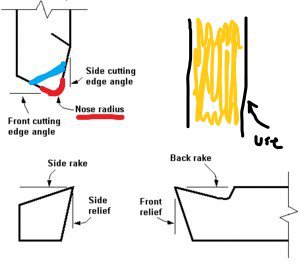- Joined
- Dec 20, 2012
- Messages
- 9,422
View attachment 247609
I am beginning to think this is of extraterrestrial origin...
Robert
EDIT:
Found this-
According to the Techstreet Store:
"Rex 49 is a high-speed tool steel designed to give much
longer life in machining difficult to cut materials such as
highly alloyed steels, stainless steels, superalloys and
titanium. Rex 49 heat treated to 67/69 Rockwell C makes
it outstanding for difficult machining operations."
"After much research, REX 49 chemical analysis % was
found within the pages of a declassified Federal Document:
Carbon - 1.10
Manganese - 0.45
Silicon - 0.30
Chrome - 4.25
Tungsten - 6.75
Molybdenum - 3.75
Vanadium - 2.0
Cobalt - 5.0"
Personally, I believe Crucible/Rex had a contract with the Federal Government that allowed them to reverse engineer materials from the fragments of crashed alien spacecraft.
R
Robert, I just saw your edit. Rex 49 has a fair amount of Molybenum compared to most HSS but the composition is not that different from other tool bits. It should tolerate more red heat, though. I honestly don't know why it would be such a bear to grind unless its the increased carbon. T15 has increased carbon and it can be tough to grind, too, so maybe that's it. Still, I should think a ceramic belt should handle it. Please let us know how your ceramic belts work on this one.


